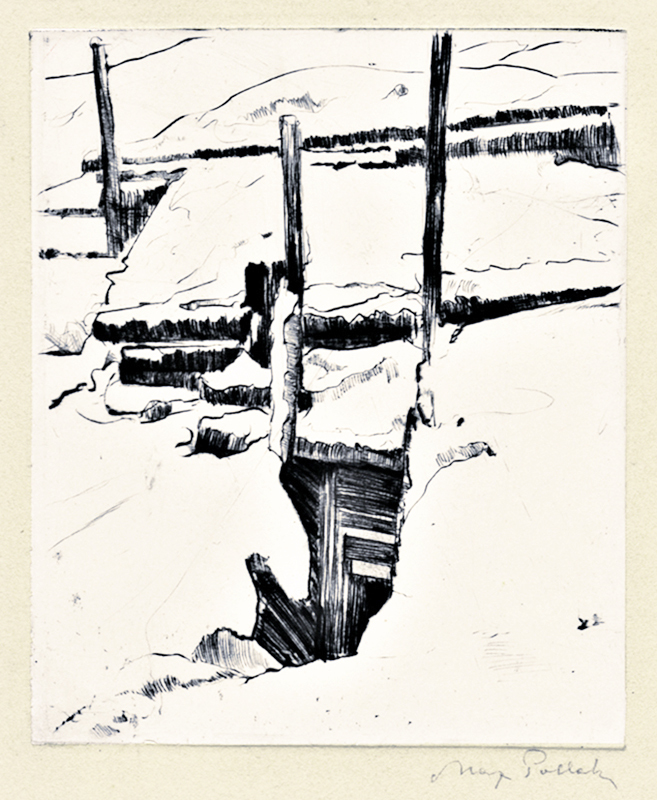
19th, 20th & 21st Century Fine Prints
707-546-7352 · fax 707-546-7924 · web: www.annexgalleries.com · email: artannex@aol.com
Trenches in Winter (Unterstand in Krieg) by Max Pollak

Trenches in Winter (Unterstand in Krieg)
Max Pollak
Trenches in Winter (Unterstand in Krieg)
Max Pollak
1886 - 1970 (biography)Pollak was appointed as an official artist for the Austrian Army in World War I and created several images depicting the fallout of war. As an artist, he had access to the cities and battlefields where he captured the destruction inflicted both physically and psychologically.
This drypoint, which is also translated as "Foxholes in War" captures the dreariness and hardship of winter on the front. Printed chine collé with a thin sheet of bright white paper, collaged to a heavier buff paper, the artist creates a composition that is mostly negative space that reads as white snow, punctuated with black drypoint lines - the trenches.
In the foreground a doorway is barely visible, it leads into the trenches where the soldiers are stationed. Other construction elements peek through the snow in the background. The Encyclopedia Britannica describes these trenches as such:
"The typical trench system in World War I consisted of a series of two, three, four, or more trench lines running parallel to each other and being at least 1 mile (1.6 km) in depth. Each trench was dug in a type of zigzag so that no enemy, standing at one end, could fire for more than a few yards down its length. Each of the main lines of trenches was connected to each other and to the rear by a series of communications trenches that were dug roughly perpendicular to them. Food, ammunition, fresh troops, mail, and orders were delivered through these trenches. The intricate network of trenches contained command posts, forward supply dumps, first-aid stations, kitchens, and latrines. Most importantly, it had machine-gun emplacements to defend against an assault, and it had dugouts deep enough to shelter large numbers of defending troops during an enemy bombardment."
